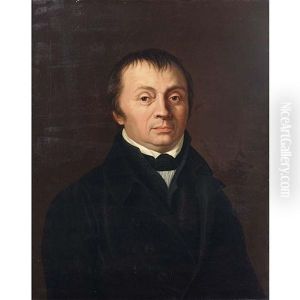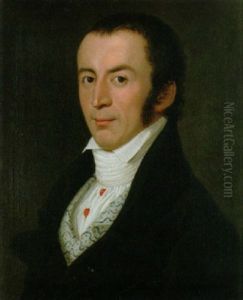Heinrich Pfenninger Paintings
Heinrich Pfenninger was a Swiss artist renowned for his work in the realm of silhouette cutting, a popular form of portraiture in the 18th and 19th centuries. Born in 1734 in Zurich, Switzerland, Pfenninger developed an interest in the arts at a young age. He was not as widely known as some of his contemporaries, but he contributed significantly to the art of silhouette cutting, which was a precursor to photography in terms of providing affordable likenesses of individuals.
Silhouette cutting involved creating a profile portrait by cutting out the outline of a person's shadow from black paper, which was then mounted on a contrasting background. This form of art became particularly popular as it was less expensive and quicker to create than traditional painted or drawn portraits. Pfenninger, like other silhouette artists, would have been skilled in capturing the essence of a subject's profile quickly and accurately.
Throughout his career, Pfenninger honed his craft and may have traveled within Switzerland or to neighboring regions to offer his services. Unfortunately, there is limited documentation on the specifics of his life and work, which is a common issue for historians studying artists who practiced more ephemeral or decorative arts during this period.
Pfenninger passed away in 1807. While individual silhouettes are often anonymous and not attributed to a specific artist, some of Pfenninger's work may still exist in private collections or archives in Switzerland. His contributions to the art of silhouette cutting remain a part of the history of Swiss art, reflecting the broader European interest in portraiture and the democratization of personal likeness in the pre-photographic age.



